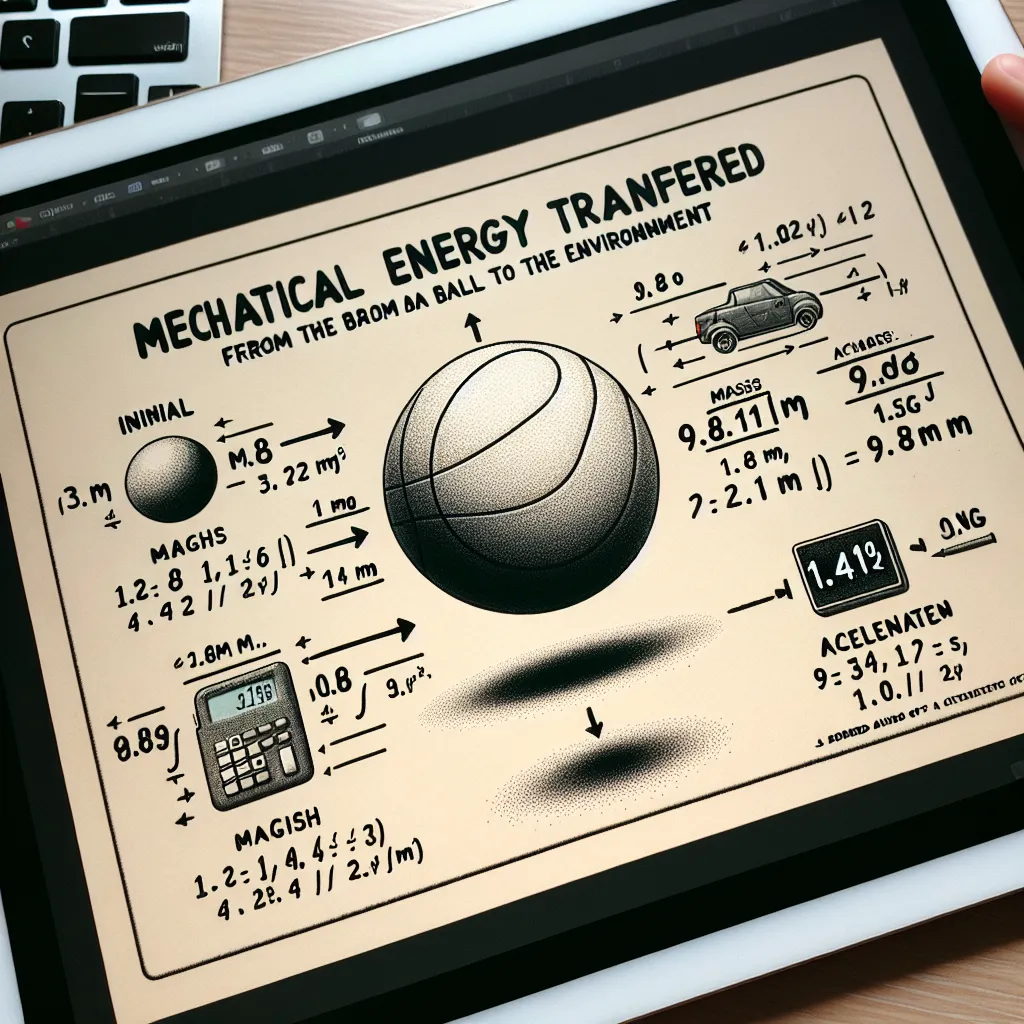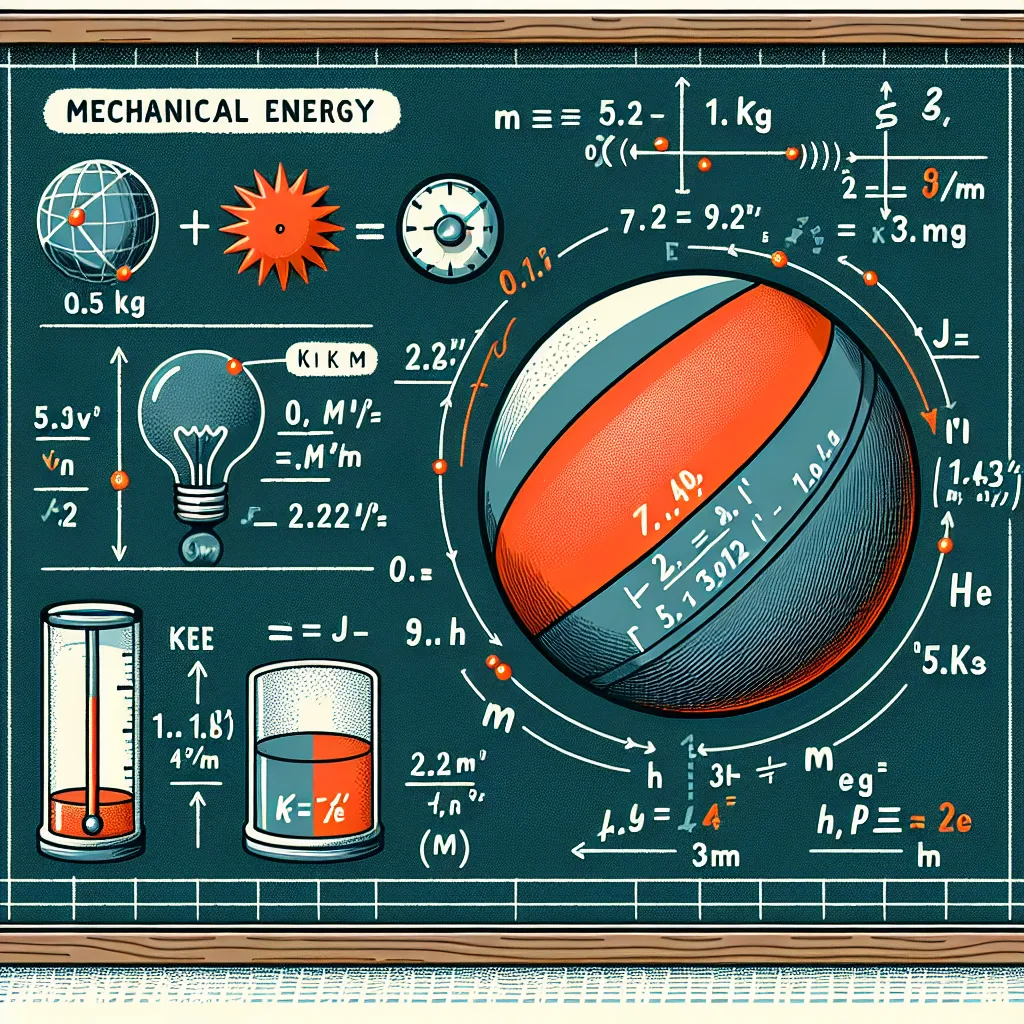Ask AI on The Internet
Question: A .08Kg ball is dropped from a height of 3m. The ball bounces back up to a height of 1.2m. How much mechanical energy was transferred from the ball to the environment?
To solve this problem, we have to first calculate the initial mechanical energy before the ball was dropped and the final mechanical energy after the ball has bounced back. The mechanical energy here is just the gravitational potential energy because the ball is initially at rest and finally also at rest momentarily. The potential energy (PE) can be given by the equation PE = m*g*h, where m is mass, g is acceleration due to gravity (usually assumed to be 9.8m/s^2 unless otherwise stated), and h is height. 1. Initial mechanical energy (before the drop): PE initial = m * g * h = 0.08 kg * 9.8 m/s^2 * 3 m = 2.352 J (joules) 2. Final mechanical energy (after the bounce): PE final = m * g * h = 0.08 kg * 9.8 m/s^2 * 1.2 m = 0.9408 J The mechanical energy transferred to the environment is the difference between the initial and final mechanical energy. Energy transferred = PE initial - PE final = 2.352 J - 0.9408 J = 1.4112 J So, approximately 1.41 Joules of mechanical energy were transferred from the ball to the environment in the process of bouncing.
A new large language model has been made available since this question was asked.
To generate an updated answer from the new model, click the button below.
Think your answer is better than the AI's? Post it below.
Other Most Relevant Posts:
 Mechanical Energy Transfer: Calculating Potential Energy Change from Ball's Initial to Maximum Height
Mechanical Energy Transfer: Calculating Potential Energy Change from Ball's Initial to Maximum Height
 Ask AI: A .1Kg ball is dropped off a ledge. The ball is travelling 12m/s when it is 3m from the ground. How much mechanical energy is in the ball?
Ask AI: A .1Kg ball is dropped off a ledge. The ball is travelling 12m/s when it is 3m from the ground. How much mechanical energy is in the ball?
Question Tags
If you want your question answered by an AI, click here.





Post your own comment: